A Glass Ballot Box Was the Answer to Voter Fraud in the 19th Century
This transparent approach let voters know that their ballots were counted
/https://tf-cmsv2-smithsonianmag-media.s3.amazonaws.com/filer/09/cd/09cd18df-eecc-4b84-a292-9abd495e41c5/nmah-2004-15562.jpg)
The hyped-up panic over voter fraud is nothing new, despite what headlines might lead people to believe—especially as the nation inches closer to Election Day. But while fraudulent voting has been found to be quite rare, perhaps one of the most innovative ways to safeguard against it while also maintaining a sense of transparency came about more than a century ago.
On October 5, 1858, a New Yorker by the name of Samuel C. Jollie, filed a patent (number 21,684) for a ballot box containing “a glass globe mounted in a frame.” According to the patent’s literature, it was constructed in such a way “that bystanders may see every ballot, which is put in, and see them when taken out,” leaving little if any opportunity for erroneous voting.
Jollie’s invention was the result of a case of fraudulent voting—specifically ballot stuffing—that occurred two years prior in 1856. The San Francisco Committee of Vigilance, a vigilante group comprised of local citizens, discovered a ballot box with a false bottom that was being used to illegally stuffing votes. The public outcry was swift, and voters feared that democracy was in jeopardy. Sensing an opportunity, Jollie created a glass ballot jar that would make it obvious if anyone tried to commit voter fraud.
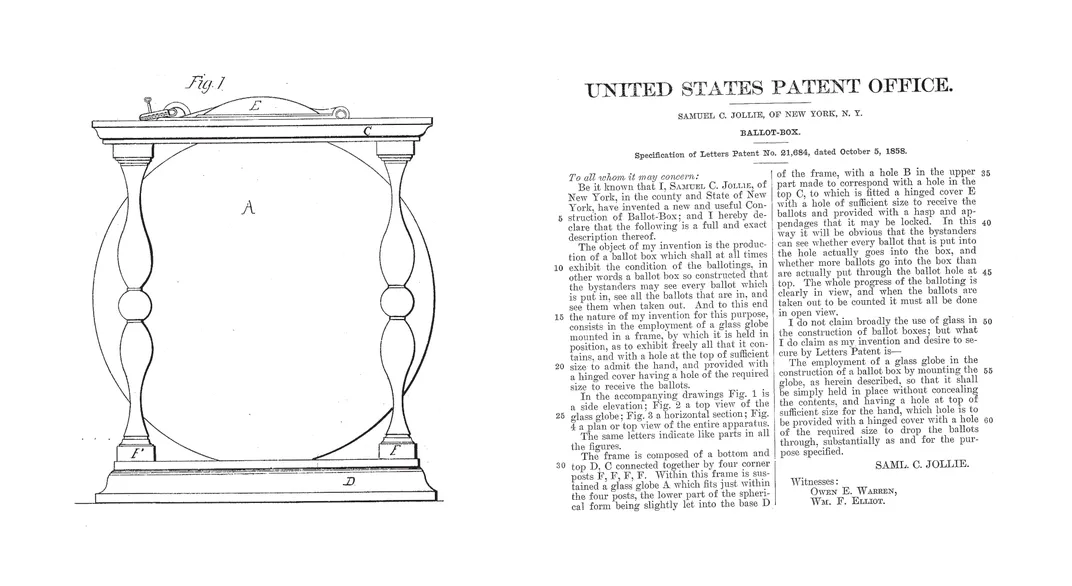
By the 1860s, glass ballot boxes had become an election staple, thanks to their transparency, which allowed voters to see their ballots once they had dropped them inside the box.
“The idea was that voters would take their printed ballots and drop them into the glass box, which gave them a sense of what was going in,” says Harry Rubenstein, curator emeritus of political history at the Smithsonian's National Museum of American History. “From a visual sense, it showed them that they weren’t putting [their ballots] into someplace dark. It was the psychological idea of publicly voting, and that your vote is going in and there was no opportunity for cheating.”
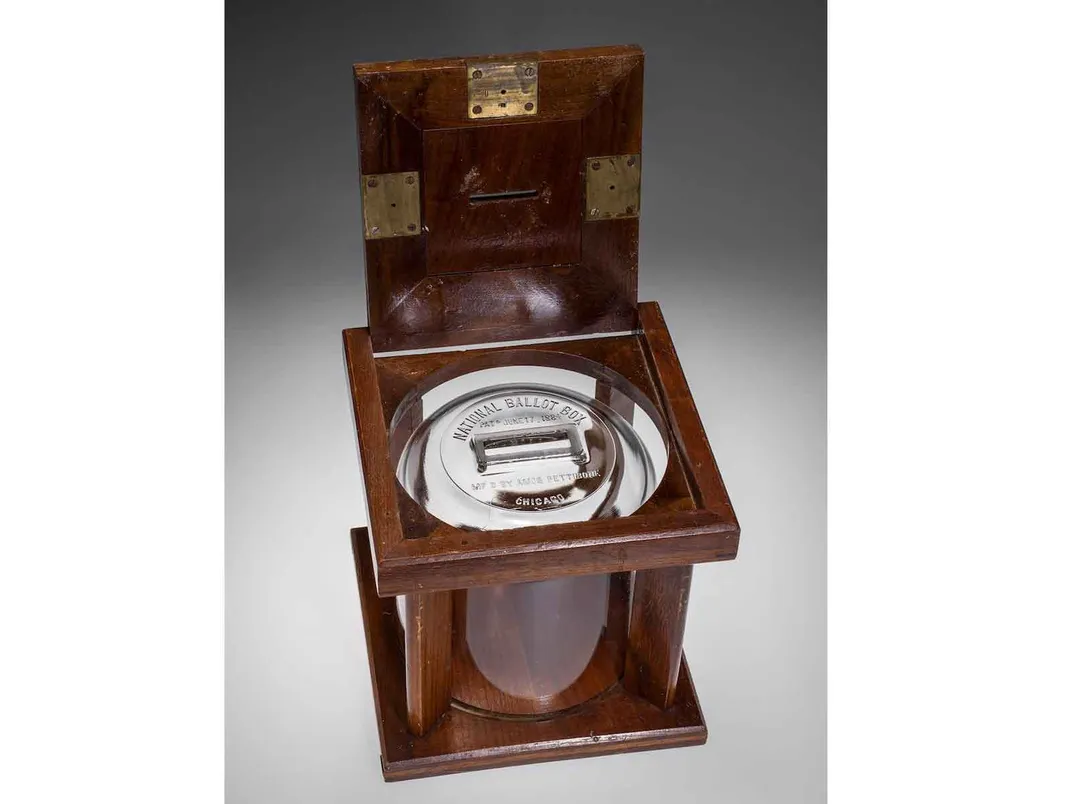
The American History Museum has a glass ballot jar similar to the one invented by Jollie that is part of its collection of political ephemera. It, too, is nestled inside a lockable wooden case and measures 12 inches x 12 inches x 13 inches in size with a slit on top for people to cast their ballots. This ballot jar, designed by Amos Pettibone (1843-1926) of Chicago, dates to 1884.
Not much is known about Pettibone other than that he was politically active. In 1904, he served as an alternate delegate at the Republican National Convention in Illinois. As the creator of this ballot box, it’s easy to conclude that voter transparency was an issue of utmost importance to him. Over the years, a number of his ballot boxes have cropped up in different collections, including one that is currently on display at the Corning Museum of Glass in Corning, New York. The object is part of the exhibition “Transparent: Voting in America,” which explores one of the pillars of democracy: the right to vote.
While the showpiece of “Transparent” is the glass ballot box, curator Marvin Bolt designed the exhibition in such a way to drive home why election transparency in America is so critical. To do so, he included a variety of historic political cartoons that stretch from the mid-1800s to the passage of the 19th amendment in 1920, which extended the right to vote to (white) women.
“Because the ballot boxes are made of glass, there aren’t a lot of survivors out there,” says Bolt, curator of science and technology at Corning. “But we can look at the cartoons [from that era] to see how these boxes were an icon.”

With the help of Ellery Foutch, an assistant professor in American Studies at Middlebury College, who has written extensively on glass ballot boxes, Bolt compiled a collection of more than a dozen cartoons, of which every single one features a glass ballot box as the common denominator.
“These cartoons really do address the issue of transparency,” he says. “They look at the different sort of means that are used in voter suppression and the efforts being used to challenge votes. These cartoons are a non-partisan way of addressing those concerns.”
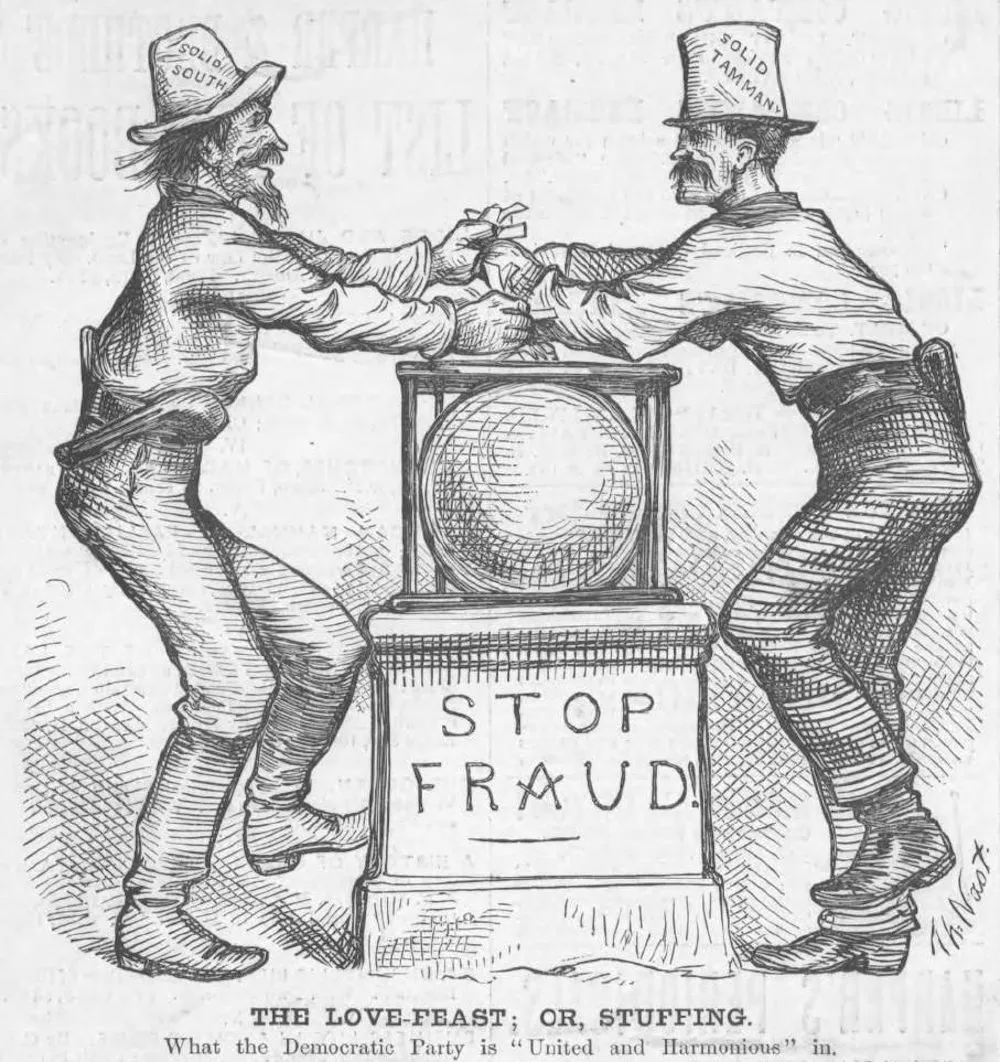
One cartoon from the July 31, 1880, issue of Harper’s Weekly shows two ruffians stuffing a ballot box emblazoned with the phrase, “Stop Fraud!” Their hats identify them as southern and northern Democrats and show that, while they’re competing against one another to win the election, they’re also committing similar fraudulent behavior.
Another cartoon “The Hyphenated American” touches on both voter fraud and an anti-immigrant sentiment that is similar to what we see today. Created by political cartoonist J. S. Pughe and published in an 1899 issue of the now-defunct humor publication Puck, the cartoon shows a line of men queuing up behind Uncle Sam to vote. But upon closer examination, Pughe has drawn each man as if they’re divided, with the right half of their bodies indicating their nationality of origin, and the left halves showing their current status as Americans. In the caption, Uncle Sam asks: “Why should I let these freaks cast whole votes when they are only half American?”
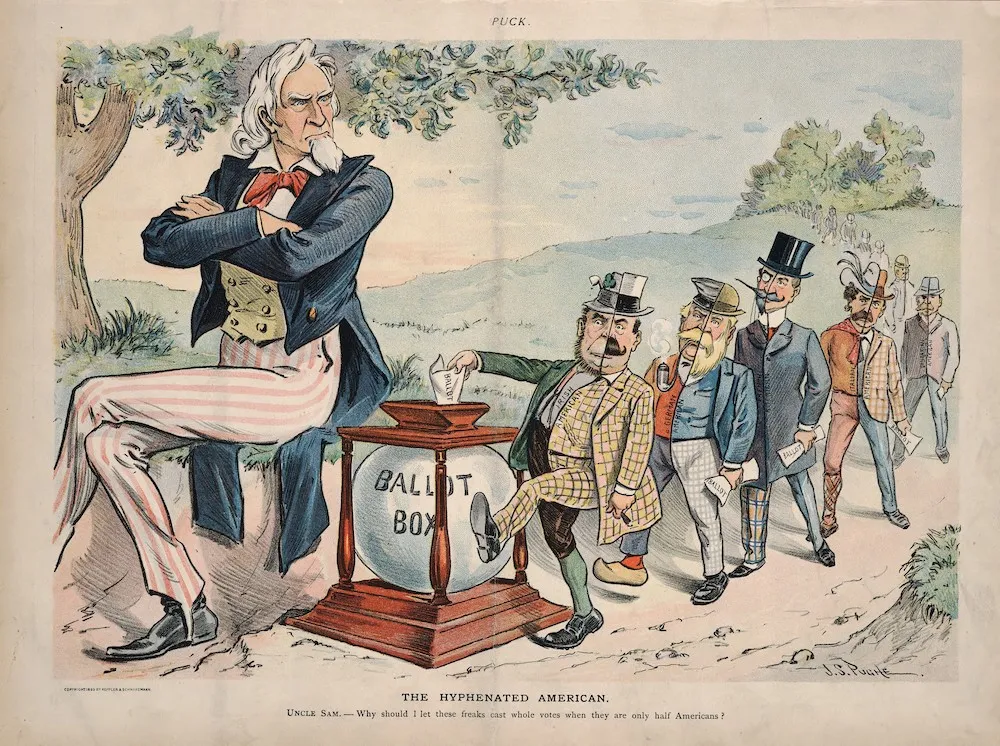
“By looking at these historical examples, you can see a sort of prejudice that has always been there that threatens the transparency of elections,” Bolt says. “The issues that we’re facing today are not new ones, and it’s important that we not hide or mask them. That’s one of the more subtle points of this exhibition, that we’ve always had racism and unsavory behavior, but it was usually hidden, but now it’s not.”
Although glass ballot boxes went out of style in favor of new polling technology introduced sometime at the turn of the century (namely voting machines that voters operated by turning a crank), Bolt thinks that there is “circumstantial evidence of [glass ballot boxes] being sufficiently recognizable enough to be included in cartoons that were making a point about voting transparency, even years later.”
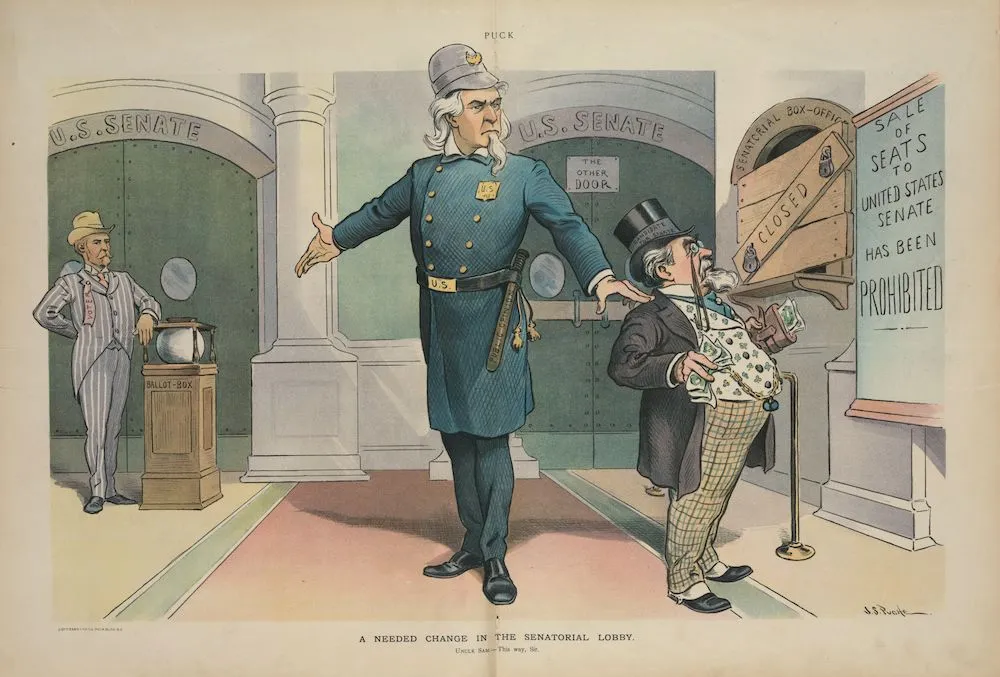
One example he points to is of a cartoon published in the San Francisco Sunday Call on July 4, 1909, that shows a woman balancing a ballot box in one hand and a cradle in the other, saying “I can handle both.” Glass ballot boxes continued to appear in political cartoons into the women’s suffrage movement.
Even though glass ballot boxes are no longer found in polling places around the United States (although Rubenstein says they are used occasionally in other countries, citing France as one example), bogus claims of fraudulent voting still plague American politics to this day.
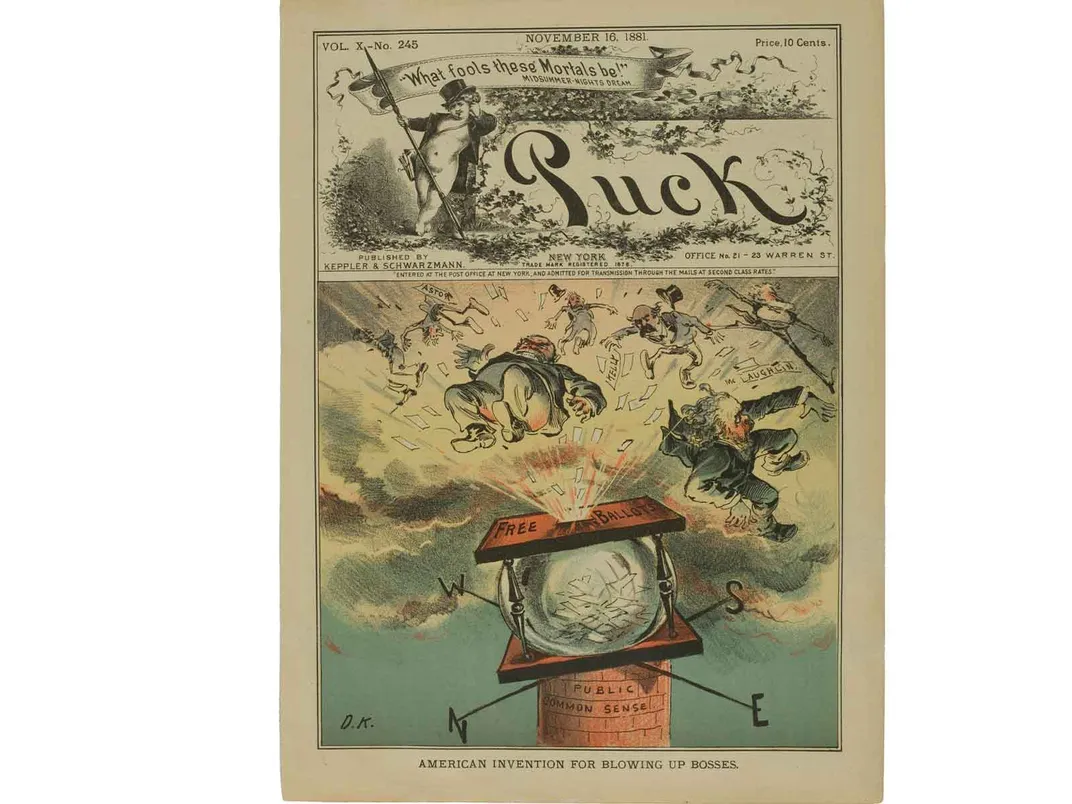
“A lack of transparency can take away from the idea of a free and fair election,” Bolt says. “It’s pretty rancorous, and there are some nefarious and ugly behaviors going on, but we’ve also seen them before, and yet democracy has continued. That isn’t to say we should do nothing, this threat to transparency and fairness during an election needs to be fought strenuously. But there’s also a message of hope that yes, this idea of transparency is an ideal, and that we must keep fighting these threats so that way our free, civil and democratic society can survive.”